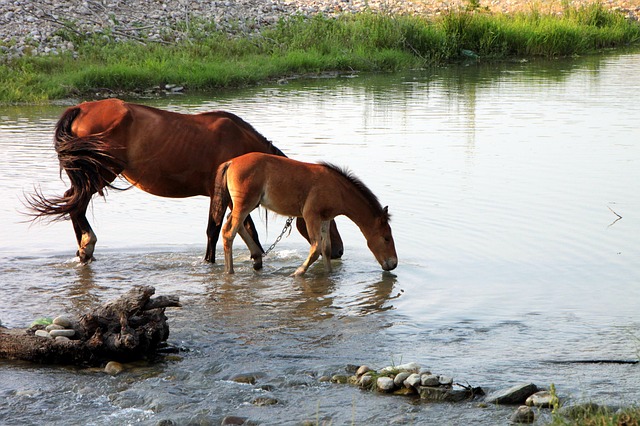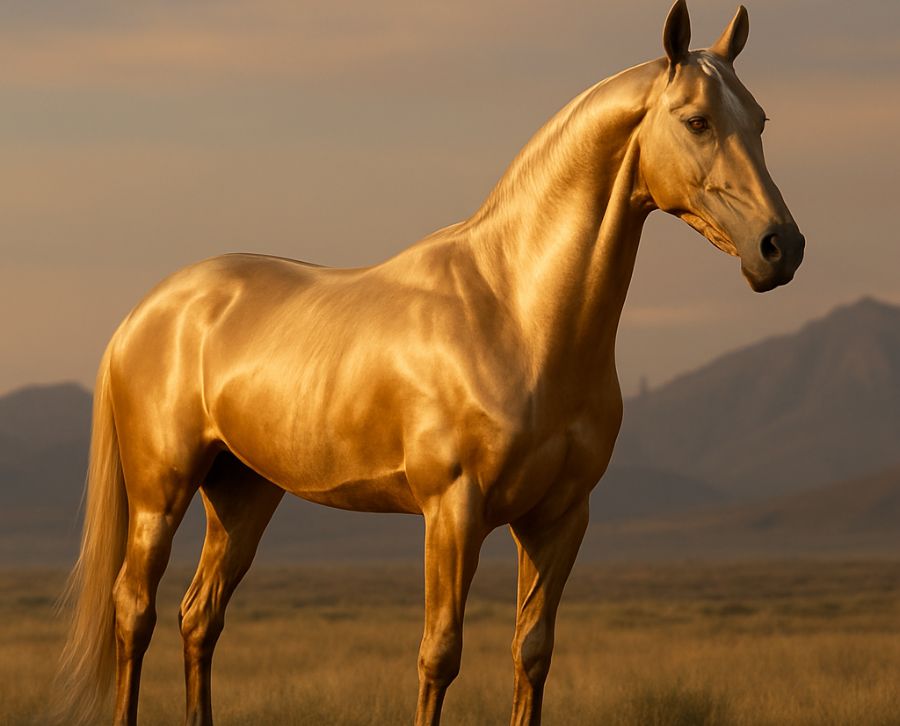Horses can withstand high temperatures if they are kept hydrated and protected from direct sunlight during the hottest hours.
A horse’s normal temperature ranges from 37.2 to 37.8 degrees Celsius. During periods of activity, their temperature rises naturally, which is beneficial to their body. However, if the temperature rises too high, it can be dangerous to the animal’s health.
In medium to high temperature conditions, it is recommended that a horse at rest and consuming feed and forage should drink at least 5 to 6 litres of water per 100 kg of body weight to avoid two major dangers: dehydration and hyperthermia or heat stroke, which in severe cases can be fatal if not treated immediately.
What is the best climate for horses?
A horse’s well-being depends to a large extent on the climate around them. For a comfortable environment, it is recommended that the temperature is kept in a balanced range between 0°C and 25°C, which would be a warm climate. This range allows these magnificent animals to maintain their internal body temperature at an optimal level of around 38°C, thus avoiding both extreme cold and stifling heat.
How does heat affect horses?
Heat can be very damaging to horses, especially if measures are not taken to protect them.
Excessive heat can cause a range of health problems in equines, including heat shock, dehydration and related discomforts such as excessive sweating, rashes, hives and fatigue.
It is important to be alert to the signs that a horse is suffering from heat and to provide a suitable, cool environment during heatwave days.
Tips for looking after your horse in summer
Although horses are majestic-looking animals with great physical endurance, their body temperature rises much faster than humans. They are therefore more sensitive to heat than we are.
To ensure their health and well-being in the arrival of high temperatures, it is necessary to follow some basic advice.
Take care of hydration
Provide clean, fresh water for your horse and be sure he has access to it at all times. It is important to keep your horse hydrated throughout the day, especially during the middle of the day, which tends to be the most sweltering time during the day.
Grooming your horse and combing the hair
Gather your horse’s hair into a hairstyle that will keep him cool and comfortable during the summer. Remember to brush it first, then you can braid it into plaits or a low ponytail. If you live in a very hot area, you can opt for a haircut.
Avoid riding or transporting during the hottest part of the day
If you need to ride or transport your horse, you should do so during the cooler hours of the day, such as early in the morning or in the evening.
Keep your horse away from insects
With warmer temperatures, insects are on the rise, and they can be very annoying during the summer, so it’s important to keep them away from your horse. Use natural repellents and clean the stables regularly to avoid a build-up of insects.
How to keep your horse cool during a heatwave
Compared to humans, horses can be up to ten times more sensitive to sudden changes in temperature. So if you want to avoid suffering or harm during a heatwave, it is essential to provide your horse with the right protection.
Keep him in the shade to prevent heat stroke and sunburn
Horses are more prone to heat stroke than we are, and can also suffer from sunburn if exposed to direct sunlight during the hottest part of the day. Therefore, try to keep them in the shade and provide shelters for them to rest comfortably.
Clean the stable more frequently
The heat can lead to a build-up of insects and bacteria in the stable, so it’s important to clean it more frequently during the hotter weather, changing the straw and airing it out to improve hygiene. In addition, you can replenish the water in the drinking troughs each time you clean the stable.
Reduce physical activity
Reducing your horse’s physical activity when the outside temperature is higher than normal can help prevent heat stroke, dehydration and fatigue. If possible, keep him in a cool, quiet environment so he can rest.
Signs that your horse is suffering from heat stroke
It is important to be alert to the signs that a horse is suffering from heat stress, as this can be an emergency situation. It is when the animal loses its ability to self-regulate its body temperature that it is at risk of hyperthermia. Some symptoms to look out for are:
- Excessive sweating
- Fatigue
- Rapid and heavy breathing
- Muscle tremors
- Dehydration
- Loss of appetite
Checking your horse for signs of dehydration
Checking your equine for signs of dehydration is very important as a hyperthermia prevention measure. If your horse is dehydrated, it is necessary to give water immediately and seek veterinary attention if necessary. Some signs of dehydration in horses are:
- Dry, sticky gums.
- Sunken eyes
- Loss of skin elasticity
- Dark, concentrated urine
Taking body temperature
Taking your horse’s body temperature is another way to find out if it is suffering from heat stroke. A horse’s normal temperature is around 38°C to 39°C. If your horse’s temperature exceeds 40°C, immediate action needs to be taken to reduce it.
How to treat heat stroke in your horse
If you suspect your horse is suffering from heat shock, it is important to take prompt action to treat it:
- Move him to a cool, shaded environment.
- Give him fresh, clean water to drink.
- Apply cool water to his body to reduce his temperature, you can use foggers or spray with a hose from bottom to top, without getting his head or back wet.
- Ventilate the stable to improve air circulation.
- Seek urgent veterinary attention if symptoms do not improve.





